Cute & Easy Knitting
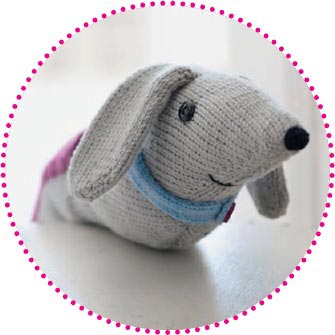
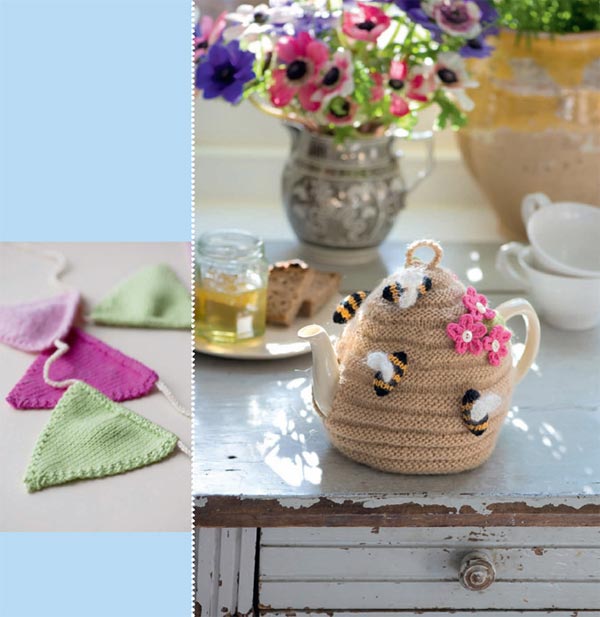
Cute & Easy Knitting Learn to knit with these 35 adorable projects Fiona Goble



Published in 2013 by CICO Books An imprint of Ryland Peters & Small 519 Broadway, 5th Floor, New York NY 10012 2021 Jockeys Fields, London WC1R 4BW www.rylandpeters.com 10 9 8 7 6 5 4 3 2 1 Text copyright Fiona Goble 2013 Design, photography, and illustration copyright CICO Books 2013 The authors moral rights have been asserted. All rights reserved. No part of this publication may be reproduced, stored in a retrieval system, or transmitted in any form or by any means, electronic, mechanical, photocopying, or otherwise, without the prior permission of the publisher. A CIP catalog record for this book is available from the British Library. eISBN: 978-1-78249-268-9 ISBN: 978-1-78249-041-8 Printed in China For digital editions visit www.cicobooks.com/apps.php
Editor: Marie Clayton
Designer: Julie Bennett
Artworks: Stephen Dew
Photographer: Caroline Arber
Stylist: Sophie Martell and Nel Haynes While I love traditional knitted items, for this collection I wanted to create something a bit different. I wanted the designs to be pretty, quirkyand to have a slightly vintage feel.
In other words, I wanted to produce a range of knitted items that Id like to have in my own homeor, in some cases, round my own neck or on my own hands! The collection includes patterns for newbie knitters as well as seasoned pros and just about every stage in between. Ive divided the collection into three sections. The patterns in the first part are suitable for those who have just started to knit but still want to produce something lovelyeither for themselves or as a gift. In the second part the projects are aimed at knitters who have mastered the basics; theyre up for something of a challenge but dont want anything too fancy or intricate. If you think this might be you but you havent picked up your needles for a while, have a look through the Knitting Know-how section that begins on . I think knitting is a bit like riding a bike once youve learned how to do it, its easy to get going again even after a bit of a break.
In the final part of the book, Ive included projects for slightly more experienced knitters. But dont worry too muchthis isnt a book for people who want to embark on projects that take several months of solid knitting, or those who want to spend their entire pay packet on knitting yarns. And while on the subject of yarns, all the projects in the book are knitted in standard yarns. If you cant find the one specified or simply want to knit the item in something different, then choose a similar yarn of the same thickness. Remember to knit your gauge (tension) square first, though, to make sure that you are happy with the look and that your finished creation will be the right size. For me, the most satisfying thing about knitting is how you can create such gorgeous items from something so simplejust a pair of knitting needles and a ball of yarn.
All right, I admit that you usually also need a needle to sew your project together and a few adornments, but Im sure you know what I mean. I have loved working out the patterns in this book and I hope you will have fun recreating the items, perhaps in your own colors or with your own unique twist. I would love to hear how you get onso please feel free to contact me via my blog at fionagoble.wordpress.com. 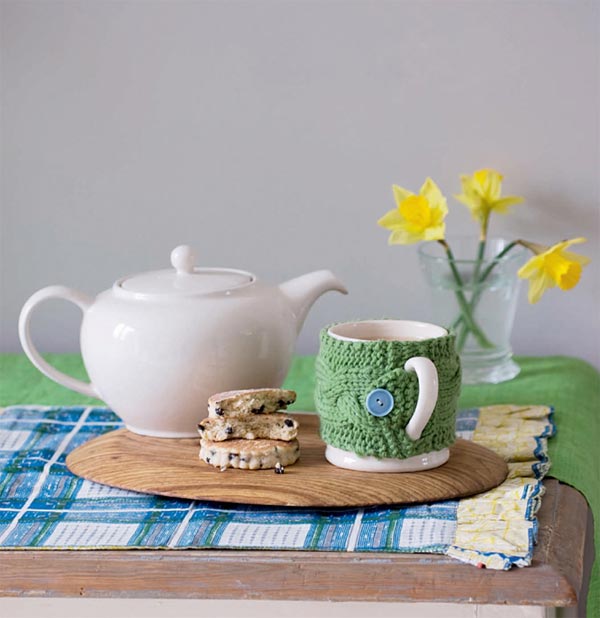 The knitting needles, yarn, and other items that you need are listed at the beginning of each of the pattern instructions.
The knitting needles, yarn, and other items that you need are listed at the beginning of each of the pattern instructions. 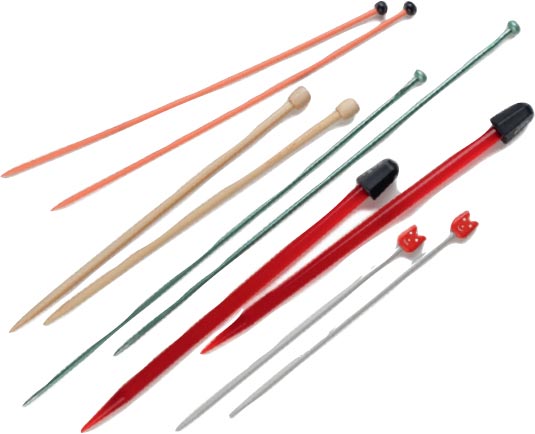 Knitting needles Standard knitting needles can be made of metal, bamboo, or plastic and which type you choose is a matter of personal preference. The different sizes are based on the needle diameter but they also come in different lengths.
Knitting needles Standard knitting needles can be made of metal, bamboo, or plastic and which type you choose is a matter of personal preference. The different sizes are based on the needle diameter but they also come in different lengths.
Choose shorter needles for smaller projects because you will find them easier to work with. A couple of projects in this book use a circular knitting needle, which has a point at each end and a flexible section in the middle, usually made of plastic. Because they are much longer than standard needles you can use them to knit extra-wide projects such as the Stripy Throw (see ). Circular needles also enable you to knit a tube although we do not use them in this way in the projects in this book. 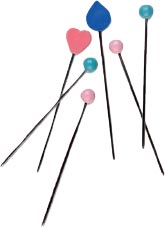 Pins Pins can be used to hold pieces of knitting together before you sew.
Pins Pins can be used to hold pieces of knitting together before you sew. 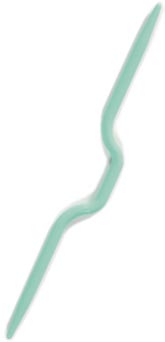 Cable needle These are short needles with a point on each end, used to make a cable pattern in your knitting.
Cable needle These are short needles with a point on each end, used to make a cable pattern in your knitting.  Cable needle These are short needles with a point on each end, used to make a cable pattern in your knitting.
Cable needle These are short needles with a point on each end, used to make a cable pattern in your knitting.
Sometimes they have a dip in the middle to help make sure your stitches stay in place on the needle. Scissors A small pair of sharp scissors is a vital tool for all knitters. They are used for snipping the yarn once your work is finished, and for trimming yarn tails after you have woven them in.  Point protectors You can pop these over the point of your needles when you are taking a break from your knitting. They will stop the needles poking through your knitting bag or basket and keep your stitches on the needle.
Point protectors You can pop these over the point of your needles when you are taking a break from your knitting. They will stop the needles poking through your knitting bag or basket and keep your stitches on the needle. 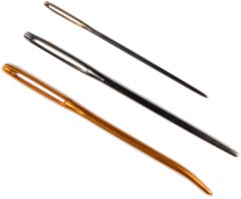 Yarn sewing and other needles Large-eye yarn needles are used to sew your projects together.
Yarn sewing and other needles Large-eye yarn needles are used to sew your projects together.  Yarn sewing and other needles Large-eye yarn needles are used to sew your projects together.
Yarn sewing and other needles Large-eye yarn needles are used to sew your projects together.
They are usually slightly blunt so that you do not split the yarn as you sew. Always choose the smallest size possible for the yarn used because this will make your work easier. For some projects you will also need an embroidery needle, which has a sharper point than a yarn sewing needle. Remember to select a needle with an eye large enough to thread the yarn. A standard sewing needle is used for sewing on buttons, snap fasteners, and other items. Safety pins Ordinary small safety pins are useful to mark particular stitches or rows that you will need to come back to later on.

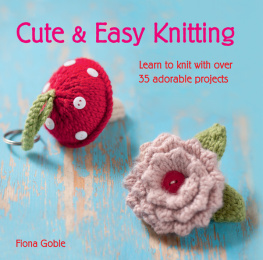

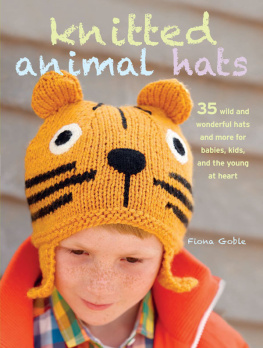

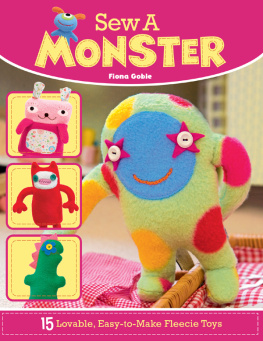
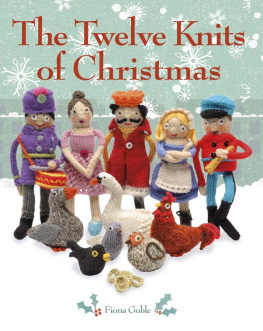
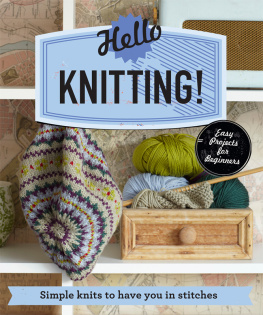
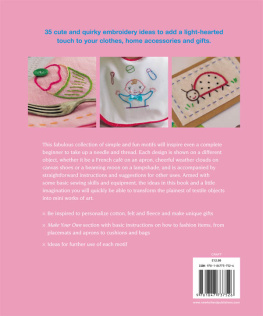
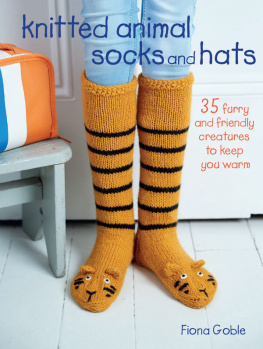
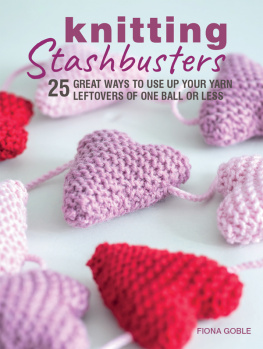
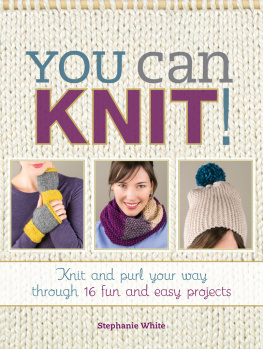

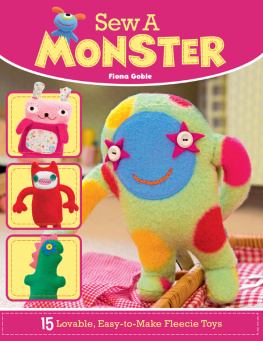
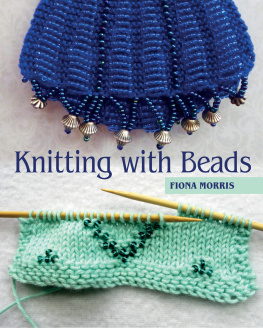
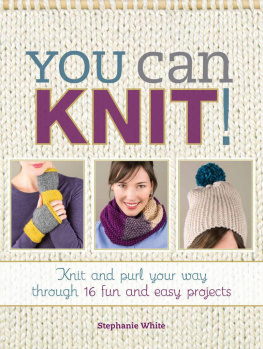
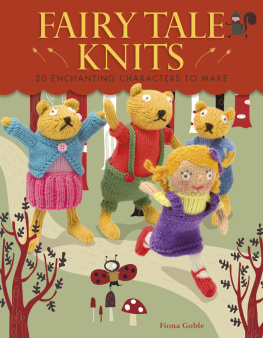


 Cute & Easy Knitting Learn to knit with these 35 adorable projects Fiona Goble
Cute & Easy Knitting Learn to knit with these 35 adorable projects Fiona Goble 

 Published in 2013 by CICO Books An imprint of Ryland Peters & Small 519 Broadway, 5th Floor, New York NY 10012 2021 Jockeys Fields, London WC1R 4BW www.rylandpeters.com 10 9 8 7 6 5 4 3 2 1 Text copyright Fiona Goble 2013 Design, photography, and illustration copyright CICO Books 2013 The authors moral rights have been asserted. All rights reserved. No part of this publication may be reproduced, stored in a retrieval system, or transmitted in any form or by any means, electronic, mechanical, photocopying, or otherwise, without the prior permission of the publisher. A CIP catalog record for this book is available from the British Library. eISBN: 978-1-78249-268-9 ISBN: 978-1-78249-041-8 Printed in China For digital editions visit www.cicobooks.com/apps.php Editor: Marie Clayton Designer: Julie Bennett Artworks: Stephen Dew Photographer: Caroline Arber Stylist: Sophie Martell and Nel Haynes While I love traditional knitted items, for this collection I wanted to create something a bit different. I wanted the designs to be pretty, quirkyand to have a slightly vintage feel.
Published in 2013 by CICO Books An imprint of Ryland Peters & Small 519 Broadway, 5th Floor, New York NY 10012 2021 Jockeys Fields, London WC1R 4BW www.rylandpeters.com 10 9 8 7 6 5 4 3 2 1 Text copyright Fiona Goble 2013 Design, photography, and illustration copyright CICO Books 2013 The authors moral rights have been asserted. All rights reserved. No part of this publication may be reproduced, stored in a retrieval system, or transmitted in any form or by any means, electronic, mechanical, photocopying, or otherwise, without the prior permission of the publisher. A CIP catalog record for this book is available from the British Library. eISBN: 978-1-78249-268-9 ISBN: 978-1-78249-041-8 Printed in China For digital editions visit www.cicobooks.com/apps.php Editor: Marie Clayton Designer: Julie Bennett Artworks: Stephen Dew Photographer: Caroline Arber Stylist: Sophie Martell and Nel Haynes While I love traditional knitted items, for this collection I wanted to create something a bit different. I wanted the designs to be pretty, quirkyand to have a slightly vintage feel.  The knitting needles, yarn, and other items that you need are listed at the beginning of each of the pattern instructions.
The knitting needles, yarn, and other items that you need are listed at the beginning of each of the pattern instructions.  Knitting needles Standard knitting needles can be made of metal, bamboo, or plastic and which type you choose is a matter of personal preference. The different sizes are based on the needle diameter but they also come in different lengths.
Knitting needles Standard knitting needles can be made of metal, bamboo, or plastic and which type you choose is a matter of personal preference. The different sizes are based on the needle diameter but they also come in different lengths. Pins Pins can be used to hold pieces of knitting together before you sew.
Pins Pins can be used to hold pieces of knitting together before you sew.  Cable needle These are short needles with a point on each end, used to make a cable pattern in your knitting.
Cable needle These are short needles with a point on each end, used to make a cable pattern in your knitting.  Point protectors You can pop these over the point of your needles when you are taking a break from your knitting. They will stop the needles poking through your knitting bag or basket and keep your stitches on the needle.
Point protectors You can pop these over the point of your needles when you are taking a break from your knitting. They will stop the needles poking through your knitting bag or basket and keep your stitches on the needle.  Yarn sewing and other needles Large-eye yarn needles are used to sew your projects together.
Yarn sewing and other needles Large-eye yarn needles are used to sew your projects together.